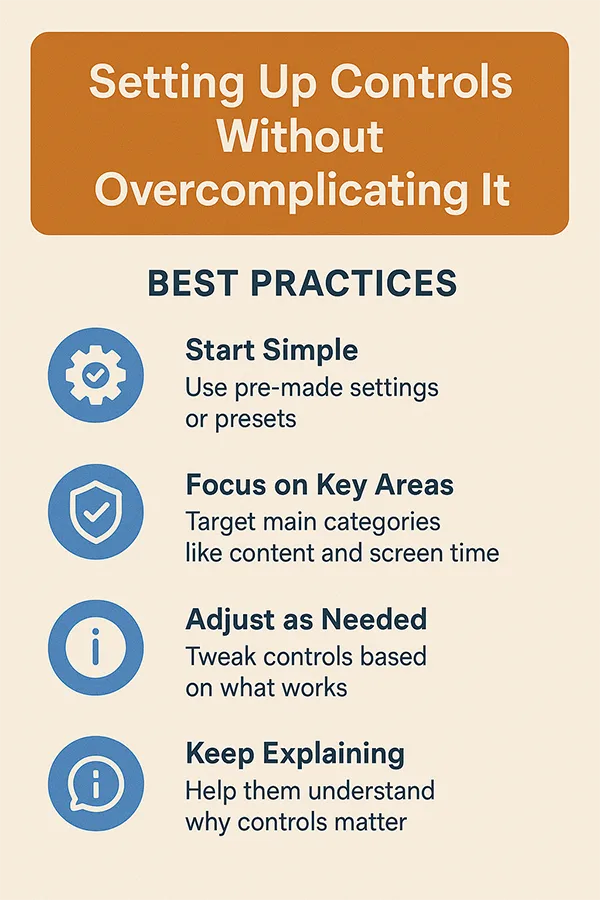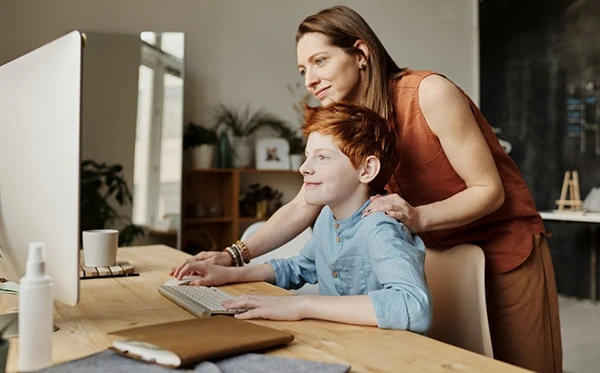By using the Google Family Link app, parents can filter inappropriate content for their children.
The internet is woven into nearly every part of our kids’ lives, from homework to games to how they connect with friends. That makes online safety a constant worry for parents. While filters and app restrictions help, they only go so far. What matters more is how children learn to navigate the digital world with awareness, confidence, and healthy habits.
Taking cues from how a Sydney digital media agency might run a campaign, parents can borrow strategies that blend structure with flexibility. Campaigns are planned, monitored, and refined. Why not take the same approach when guiding kids online? With a clear goal, some practical tools, and ongoing conversations, families can turn safety into something proactive rather than a list of no-go rules.

Table of Contents
- What are parental controls?
- Setting up controls without overcomplicating it
- Turning controls to teachable methods
- Monitoring progress without being a spy
- Choosing positive habits over punishment
The internet, while showing positive effects, can also expose your children to various risks, including watching inappropriate content, getting trapped in cyberbullying, and being blackmailed online. To limit and monitor what your child is watching online, we have software tools that are known as parental controls.
If used properly, parents can control what their child sees. Particular websites can be blocked, and parents can filter the content for their children. As a result, children will never get exposed to sexual content or the content that may support self-harm, violence, drugs, gambling, or terrorism in any way.
These tools allow parents to monitor what their kids are watching and monitor their engagement with people online. Time limits can also be set using such tools.
Instead of overcomplicating it, some proven measures can be taken for effective results. As parents are the first line of defence for their children’s exposure to the internet, they can manage this very effectively. The very first step is to teach your children about the limitations of the internet and its safety. Children should be taught about what is safe online and what is not. Teach them not to reveal their real identity for safety purposes.
With the help of advanced settings, such as Browser filters, Google searches can be made very safe. By using safe search, inappropriate content can be blocked for children. Also, Norton Family can be used to limit the web content to educational content only. And it can be installed on unlimited devices.
Some other tools, like Net Nanny, can help parents keep an eye on what their children are watching on YouTube. This can specifically let parents know about what videos are being seen by their children. So, this is how tracking and monitoring the online activities of your child can make it very easy for parents to ensure online safety.
Additionally, the infographic below shows some best practices that will help set up controls without overcomplicating things.

Not all kids are the same; some kids do not require strict supervision and can be easily taught about how to safely use the internet, at what limit to use it, and how to take care of their online safety. Instead of setting limits on your kids’ controls, some effective teachings can be used to get the same results.
Sharing guidelines with your kids, such as never sharing passwords or revealing personal information like contact numbers, email, and more things can help control. This is how effective teaching can be given to your kids at the right time to build their positive habits.
Keeping an eye on your kids with parental tools is an effective step, but overdoing this can make the child feel uncomfortable. Restricted access to sensitive content is a required step, but acting like a spy by limiting things to a higher level should be avoided.
Instead, try building a habit with your kids that whenever they find something inappropriate, they will come to you. Make them more comfortable with you. So that they will know that it’s for their safety, not for controlling them.
As kids grow, they should be made aware of their digital responsibility, which means safe and ethical use of technology. And this digital world is evolving continuously, so parents should be aware of the new trends and updates in technology. Otherwise, their kids can even fool them by acting smart.
Staying updated and changing tactics will also make sure that you can have open conversations with your kids about new potential risks in the online world. So, adjusting your tactics and being updated is an effective step towards online safety.
Knowledgeable Fact
Think twice before clicking any link or website; your privacy and security are in your hands. A single wrong click can fall you into the trap.

Punishing your children can make them feel overcontrolled, while you can shift to building their positive habits. If a kid is overusing or misusing the internet or technology, then this is a result of carelessness on the parents’ side. Teaching them at the right time could make a positive habit of limited technology use.
It’s never too late. Still, the right lessons, positive habits, and controlled supervision can fix things. Discuss the negative aspects of the internet with your children, and make it playful by acting as a team. Play games with your children, watch videos together, talking about online safety, and then have a friendly talk about achieving it as a team.
Online safety can feel overwhelming, but it doesn’t have to. Borrowing a campaign mindset turns it into a process parents can manage. Just as marketers track progress and adapt, parents can use tools, trust, and flexibility to help children grow into mindful digital citizens. With clear goals, open dialogue, and the right balance of structure and freedom, the internet can become less of a threat and more of an opportunity for learning and connection.
By using the Google Family Link app, parents can filter inappropriate content for their children.
Digital responsibility means the safe and ethical use of technology. Not misusing it in any way.
Tools like Net Nanny help parents monitor YouTube content seen by their children, without checking their history.
As they are not made comfortable with their parents, which makes they feel like they are being overcontrolled. Making them realise that they also have the responsibility to maintain online safety can help.
